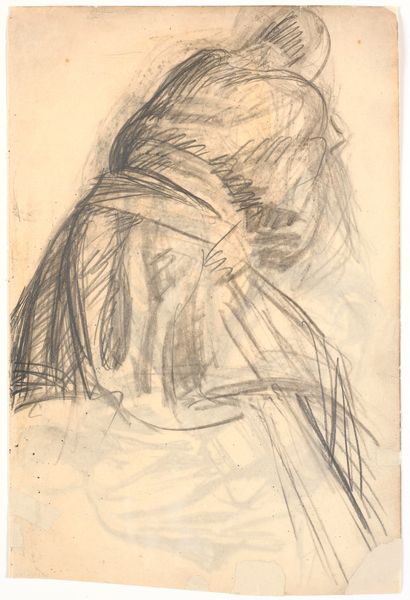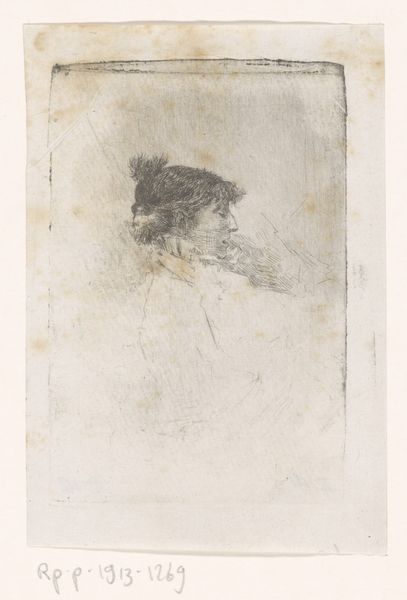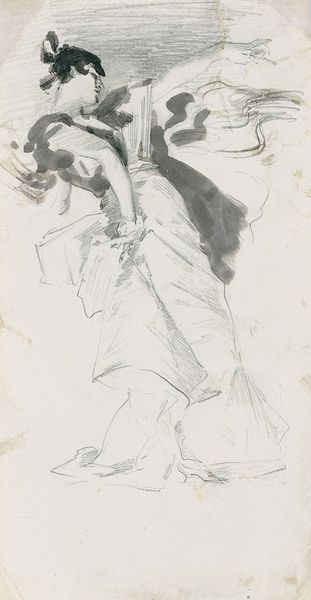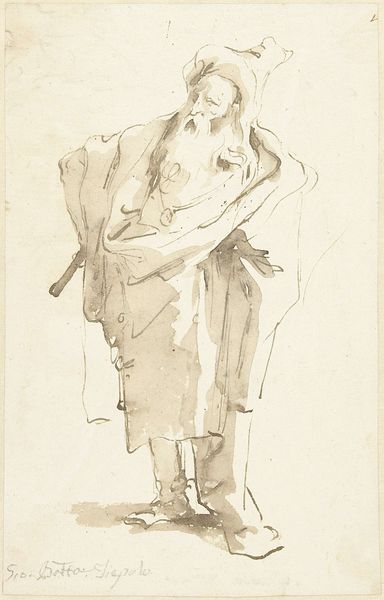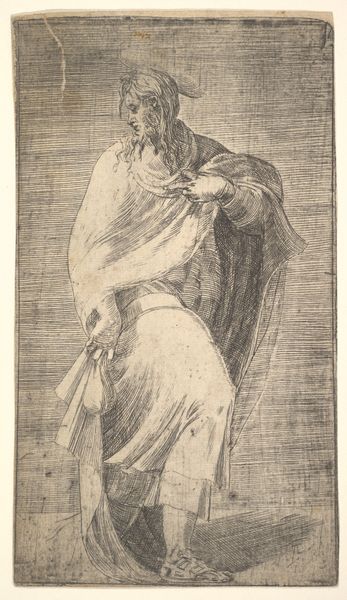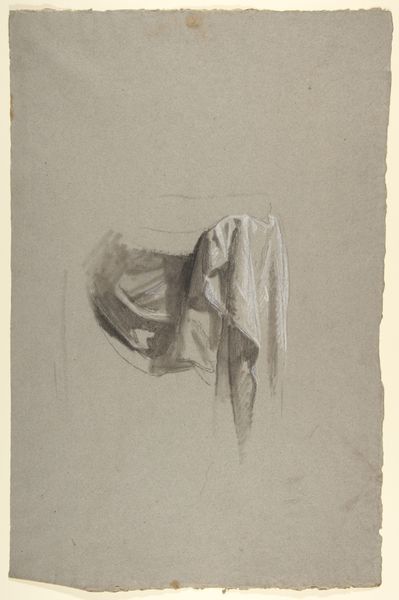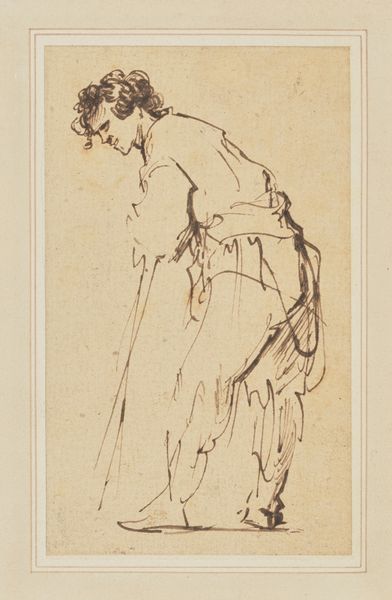
Dimensions: height 168 mm, width 78 mm
Copyright: Rijks Museum: Open Domain
Curator: This work, "Mansportret," created between 1840 and 1880, is attributed to Johannes Tavenraat and resides here at the Rijksmuseum. It's rendered in watercolor and ink. What strikes you first about it? Editor: The brevity of the execution really gets to me. There’s a ghostly, almost ethereal quality; the man's form feels as if it's dissolving right before our eyes. I feel a certain urgency or maybe longing emanating from this piece. Curator: I agree. The rapid strokes definitely lend an unfinished quality, evoking Romantic sensibilities through an almost visceral shorthand. It is likely a study; these preparatory sketches served academic and aesthetic purposes during the mid-19th century. Quick, economical capturing the features or expressions could become an ingredient of the eventual finished work. Editor: Precisely. And this immediacy gives insight to a perspective, a quick observation of a face in the crowd. Is it also making a comment on social stratification through dress or the implied occupation? Curator: It is difficult to conclude whether this work serves a deeper political agenda, the absence of social detail actually serves its purpose in being so nondescript. Instead of conveying the sitter's identity, its concern lay in training an eye for rendering of volume, line and shading on an accelerated timeline. Its social commentary, if present, is quiet—easily overshadowed by the formal experimentation on display. Editor: That is a good point. And I'm rethinking my assumptions, recognizing that these studies and practices informed grander portraits meant to aggrandize and promote a class or individual. And still, here’s the spark that gave it breath. Curator: Perhaps its allure lies in this inherent paradox, capturing a person beyond just their material or social identity. The lack of fine detailing allows us, and perhaps encourages us, to look beyond surface-level associations. Editor: A reminder, then, of art's capacity to democratize attention, even within historically unequal structures of representation. Thank you for pointing that out. Curator: My pleasure. There is so much that one work like this can still teach us.
Comments
No comments
Be the first to comment and join the conversation on the ultimate creative platform.
